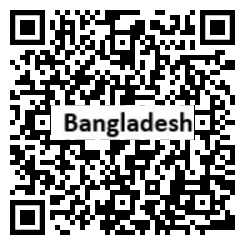Country Summary




Introduction
Background
The huge delta region formed at the confluence of the Ganges and Brahmaputra River systems - now referred to as Bangladesh - was a loosely incorporated outpost of various empires for much of the first millennium A.D. The Bengali independence movement, led by the Awami League (AL) and supported by India, won independence for Bangladesh in 1971.
Geography
Area
total: 148,460 sq km
land: 130,170 sq km
water: 18,290 sq km
Climate
tropical; mild winter (October to March); hot, humid summer (March to June); humid, warm rainy monsoon (June to October)
Natural resources
natural gas, arable land, timber, coal
People and Society
Population
165,650,475 (2022 est.)
Ethnic groups
Bengali at least 98.9%, other indigenous ethnic groups 1.1% (2011 est.)
Languages
Bangla 98.8% (official, also known as Bengali), other 1.2% (2011 est.)
Religions
Muslim 88.4%, other 11.6% (2020 est.)
Population growth rate
0.93% (2022 est.)
Government
Government type
parliamentary republic
Capital
name: Dhaka
Executive branch
chief of state: President Abdul HAMID (since 24 April 2013); note - Abdul HAMID served as acting president following the death of Zillur RAHMAN in March 2013; HAMID was subsequently indirectly elected by the National Parliament and sworn in 24 April 2013
head of government: Prime Minister Sheikh HASINA Wazed (since 6 January 2009)
Legislative branch
description: unicameral House of the Nation or Jatiya Sangsad (350 seats; 300 members in single-seat territorial constituencies directly elected by simple majority vote; 50 members - reserved for women only - indirectly elected by the elected members by proportional representation vote using single transferable vote; all members serve 5-year terms)
Economy
Economic overview
one of the fastest growing economies; significant poverty reduction; COVID-19 adversely impacted female labor force participation and undermined previously stable financial conditions; looking to diversify beyond clothing industry; fairly low government debt; new taxation law struggling to increase government revenues
Real GDP (purchasing power parity)
$793.49 billion (2020 est.)
Real GDP per capita
$4,800 (2020 est.)
Agricultural products
rice, potatoes, maize, sugar cane, milk, vegetables, onions, jute, mangoes/guavas, wheat
Industries
jute, cotton, garments, paper, leather, fertilizer, iron and steel, cement, petroleum products, tobacco, pharmaceuticals, ceramics, tea, salt, sugar, edible oils, soap and detergent, fabricated metal products, electricity, natural gas
Exports
$38.78 billion (2020 est.)
Exports - partners
United States 15%, Germany 14%, United Kingdom 8%, Spain 7%, France 7% (2019)
Exports - commodities
clothing, knitwear, leather footwear (2019)
Imports
$57.26 billion (2020 est.)
Imports - partners
China 31%, India 15%, Singapore 5% (2019)
Imports - commodities
refined petroleum, cotton, natural gas, scrap iron, wheat (2019)
Exchange rates
taka (BDT) per US dollar -
Page last updated: Wednesday, November 16, 2022
